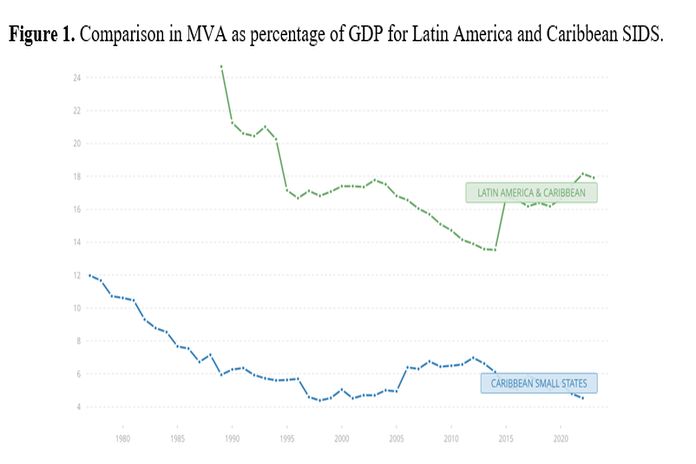By Alberto Maresca
Rodrik infers that the absence of robust manufacturing in Global South countries made them vulnerable to international economic trends: Premature de-industrialisation. Certain nations emulated the de-industrialisation of the Global North without prior competitive manufacturing.
In search of developmental receipts, Latin America’s crises of the 1980s and 1990s pushed toward de-industrialisation without being prepared for it. The intersection between trade openness and de-industrialisation is appropriate for Latin America, given that a) it took place in the same decade for the entire region; b) Latin America imported de-industrialisation from the US without inquiring about Washington’s strategy. Latin America de-industrialised at a moment when the global supply chain offshored manufacturing toward Asia, without providing the region with any alternative other than the unfortunate maquilas. This interpretation is coherent with the depression in manufacturing employment and decreased manufacturing output in the GDP of Latin American and African economies, but not for the Asian ones (Rodrik, 2016).
In Latin America, several countries hold a comparative advantage that provides degrees of resilience to de-industrialisation: Argentina, Brazil, Chile, Mexico, and most middle-income peers in the region. Alternatively, it would be impossible to explain why the harms of premature de-industrialisation were somewhat compensated in terms of GDP growth through the commodity boom. Latin America was impacted, not destroyed, by de-industrialisation. Without the comparative advantage of raw materials exports, premature industrialisation could have hampered even the commodity boom. Michael Reid (2017) remarks that Chinese demand for commodities and their increased prices between 2004 and 2008 gave the region a fabulous 5.5 percent GDP growth, unseen since the 1960s and even resilient to the 2007–2010 subprime mortgage crisis.
The adieu to manufacturing and their reduced global prices certainly motivated Latin America in forgetting this sector, becoming further dependent on imports from producers such as China. Nonetheless, caution is needed when linking commodities with de-industrialisation. If premature de-industrialisation, despite causing imports of manufacturing, was justifiable by Latin American commodities championing, therefore GPD growth would have been the highest across the Global South.
Instead, during the very commodity boom, Devlin (2013) calculates that Latin America grew less than Asia and Sub-Saharan Africa. The current industrial policies are related to higher costs than benefits in Latin American de-industrialisation, with economies just temporarily saved by the commodity boom. Nevertheless, those assertions are almost limited to South America.

When looking at the Caribbean, we might understand that de-industrialisation followed a quite different timing and rationale. According to World Bank data, as of 2022, manufacturing value added (MVA) to the GDP of Caribbean SIDS was only 5 percent, compared to the 18 percent for Latin America. Figure 1 shouts that Caribbean SIDS started cutting manufacturing production earlier than Latin America.
Quantitative differences between the Caribbean and Latin America suggest that there is no universal story for Global South de-industrialisation, neither on when, during the 20 century, did it begin. On a qualitative standpoint, Caribbean de-industrialisation has not really been premature, because of prior ISI absence for many of the SIDS. There is no base for finding a Caribbean industrialisation at any point, due to plantation economy and protracted colonialism. Newly independent Caribbean Islands were not focused on industrialising for increasing local wages, reducing unemployment or promoting a national industry.
The Trinidadian intellectual Lloyd Best (2003, p. 9) famously claimed that Caribbean economies showed “lack of local initiative in production and supply which is at the heart of the economic disorder.” It is not analogous to the Latin American experience. More than a common story of de-industrialisation, we can trace similarities, altogether with immense structural, political, social, and economic divergences across the Global South and within the Americas.










